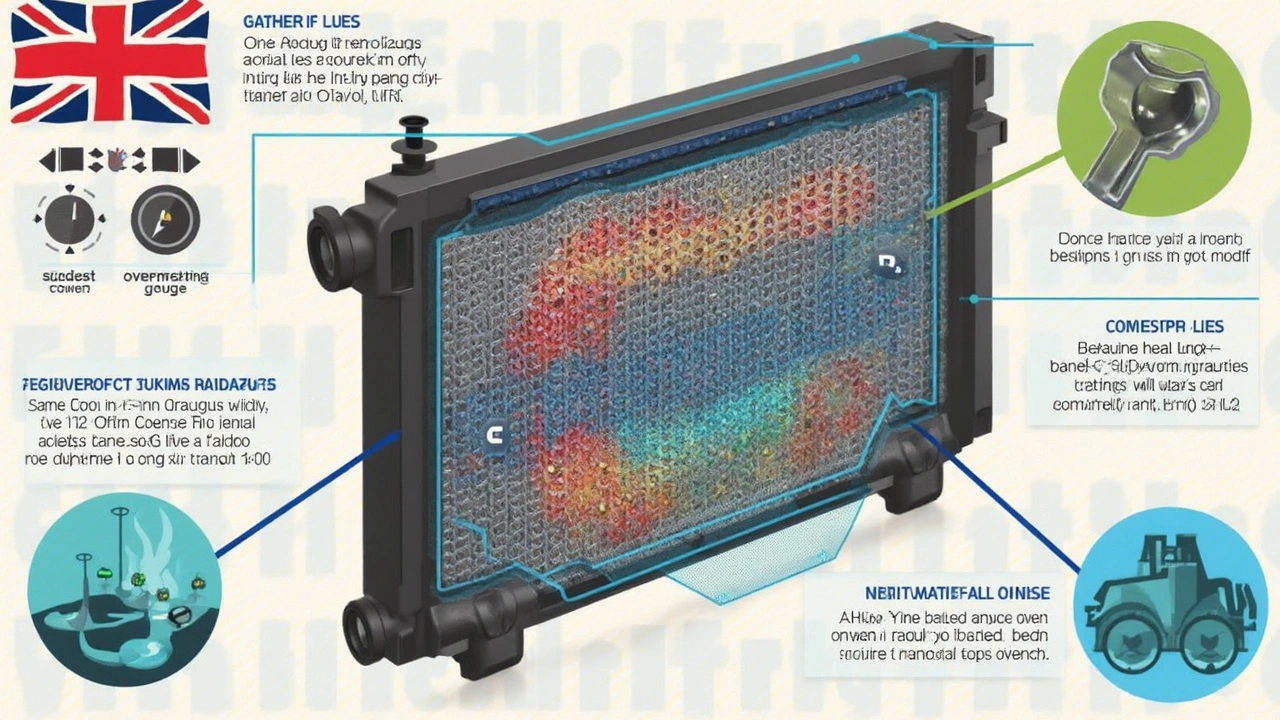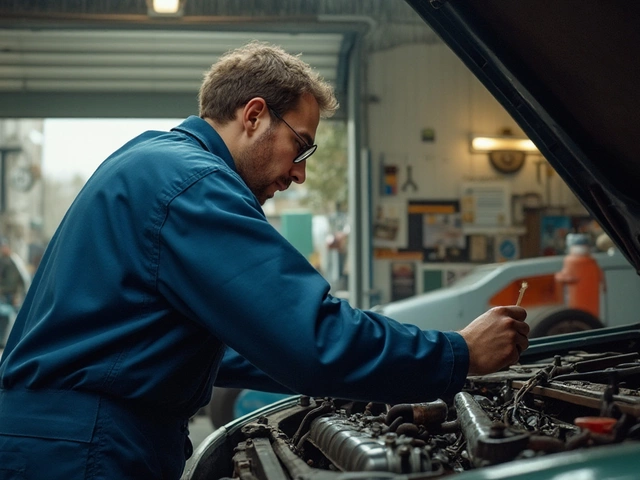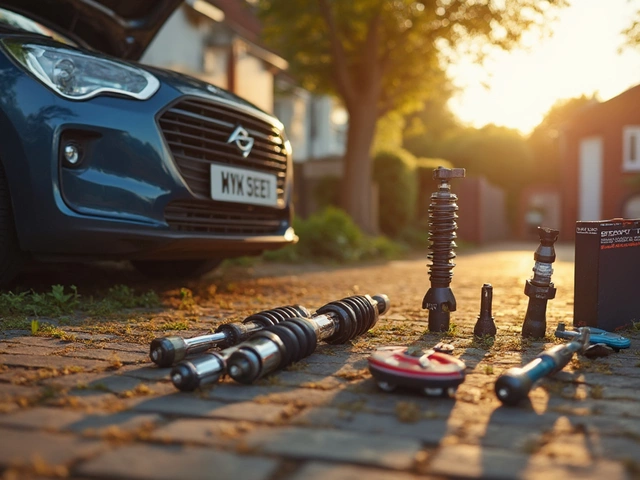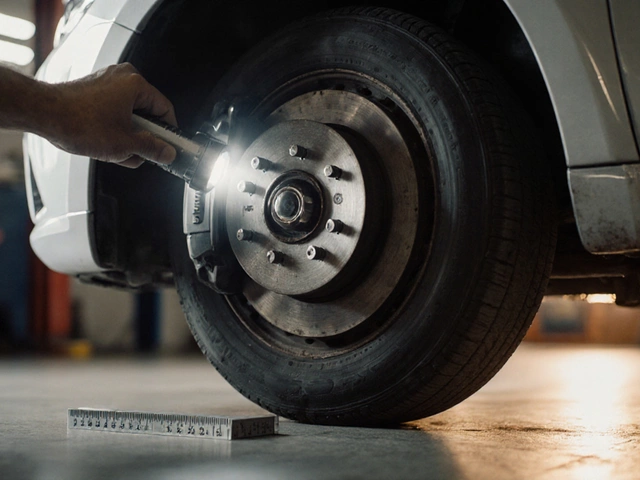Car radiators can sometimes feel like a mystery to those of us who aren't car enthusiasts. So, why even bother replacing them? Well, your radiator is the hero of your vehicle's cooling system, preventing your engine from overheating while you go about your day. Imagine cruising down the highway with smoke billowing out from under the hood—not ideal, right?
Now, here's the thing. Radiators, like all car parts, don't last forever. They can get gunked up with debris or even develop leaks. So, how do you know when it's time to part ways with your old radiator? Keep an eye out for telltale signs, like steam coming from the engine bay, an overheating engine, or coolant puddles under the car.
- Understanding Radiator Function
- Signs You Need a New Radiator
- Cost Considerations for Radiator Replacement
- DIY Radiator Replacement Tips
- Long-term Benefits of Radiator Replacement
Understanding Radiator Function
Your car’s radiator is like the VIP area for your engine's cooling. It's where all the magic happens to keep your engine from getting hotter than a summer day in Dubai. The basic job here? Cool down the engine by using coolant and air.
Let’s break it down. When your engine runs, it generates heat—lots of it. That’s where the radiator steps in. It circulates a mixture of water and coolant through a network of thin pipes and fins. These fins increase the surface area to cool the liquid faster using air that flows over them as you drive.
Core Components and Their Role
So, what's in a typical radiator? There are a few parts:
- Core: This is the heart. It consists of tiny tubes and fins. As coolant passes through, these parts transfer heat to the air.
- Inlet and Outlet Tanks: These are on the sides and they help control the flow of coolant.
- Pressure Cap: Such a small piece, but oh-so-important! It increases the boiling point of coolant, making it more efficient.
Did you know? A car radiator can lower the engine temperature to around 200°F (about 93°C). That’s essential, because extreme heat can cause engine failure.
Why It Matters
Keeping your vehicle's cooling system in check not only protects the engine but also ensures better car performance and efficiency. A well-functioning radiator contributes to fuel economy and protects critical engine components.
All of this to say, never underestimate the power of a radiator. It's the unsung hero of your vehicle, working all the time to ensure everything runs smoothly under the hood. Keeping this guy in top shape can save you from a lot of engine trouble down the road.
Signs You Need a New Radiator
Alright, let's get straight to it. Knowing when your radiator is on its last legs can save you from a dead car on the side of the road. It's not as hard as it sounds. Here are some telltale signs that your car radiator might need replacing.
Visible Leaks or Coolant Puddles
Ever notice a bright, sweet-smelling puddle under your parked car? That's likely coolant. If your radiator has sprung a leak, you'll see it on the ground sooner or later. Get it checked, because running on low coolant isn't doing your engine any favors.
Overheating Engine
Engines are supposed to get hot, but not so hot that smoke starts rising out of your hood. A malfunctioning car radiator compromises your vehicle's cooling system, leading to an overheating mess. Keep an eye on that temperature gauge.
Frequent Coolant Top-Ups
If you're topping up coolant more often than you fill the fuel tank, something's off. Either there's a leak or the radiator isn't doing its job. Either way, it's time to seek professional help or consider a replacement.
Strange Sounds
Does your car sound like it's gargling marbles? This isn't normal. Odd noises could mean an air blockage or damage inside the radiator. Best not to ignore it.
Here's a quick cheat sheet to help you spot trouble:
- Consistently high temperature gauge
- Steam from under the hood
- Rusted or corroded radiator
- Loss of coolant without obvious leaks
- Visibly worn-out hoses
Catching these signs early can save you a fortune. Getting your radiator checked when you notice these problems is smart car ownership. Isn't avoiding a major engine mishap worth it?

Cost Considerations for Radiator Replacement
Let's face it, no one wants to spend more on car repairs than they have to. Replacing car radiators might not be cheap, but understanding the costs can help you budget smartly. So, what goes into the cost?
Parts and Labor
The two main factors are parts and labor. The price of a new radiator can vary, generally from $100 to $900, depending on your vehicle's make and model. Labor costs can also be all over the map, typically ranging between $200 and $300, as mechanics may need anywhere from two to four hours to replace the radiator.
DIY vs. Professional Service
If you're the hands-on type, you might want to consider a DIY approach to save on labor. But keep in mind, it requires some mechanical know-how. If that's not your style, professional service is a safer bet and ensures the job is done right.
Unexpected Costs
Don't forget about those extra, often unplanned costs. You might need additional parts like hoses or clamps, which aren't always included with a new radiator. These might add another $30 to $80 to your bill. Also, consider if your vehicle needs a special type of coolant, as that could further increase the overall price.
Here's a simple cost breakdown to give you a clearer picture:
| Item | Cost Range |
|---|---|
| Radiator | $100 - $900 |
| Labor | $200 - $300 |
| Additional Parts | $30 - $80 |
So, is it worth investing in a new radiator replacement? If your car's radiator is causing repeat issues like overheating, the costs of constant temporary fixes may overshadow the one-time cost of replacement. Consider your car's overall condition and how much longer you plan to keep it before deciding.
DIY Radiator Replacement Tips
If you've decided it's time to swap out that faulty car radiator, doing it yourself can save some cash and give you serious street cred. But before grabbing those tools, let's break down the process so you know exactly what you're getting into.
Check Your Tools and Space
First things first, make sure you've got the right gear. You’ll need a wrench set, screwdrivers, a drain pan, and gloves. Also, ensure you have space in your garage or driveway to move around comfortably.
Drain the Radiator
Before taking anything apart, make sure your engine is completely cool. You don't want to deal with hot coolant! Locate the drain plug on the bottom of the radiator and place your pan underneath. Gently remove the plug and let the old coolant fully drain.
Remove Old Radiator
Disconnect the radiator hoses and transmission cooler lines if your car has them. Carefully unbolt the radiator from its mounting brackets. You might need to remove other parts like the fan shroud, depending on your vehicle's make.
Install the New Radiator
Position the new radiator in place. Bolt it securely and reconnect any hoses and lines. Double-check all connections to ensure they're tight; leaks are the last thing you need!
Refill with Coolant
Once everything's reattached, start filling the radiator with a 50:50 mix of water and antifreeze, or as recommended by your car manufacturer. Run the engine with the heater on high to help release any trapped air bubbles. Keep an eye on the coolant level and add more if needed.
Test for Leaks
Finally, take your car for a short drive. Check under the hood for any signs of leaking fluid. Everything looking dry and dandy? Great, you've just tackled a significant part of vehicle maintenance on your own!
| Tool | Purpose |
|---|---|
| Wrench Set | Tightening/loosing bolts |
| Drain Pan | Catching old coolant |
| Gloves | Protecting hands |
Remember, if at any stage you're unsure, it might be worth consulting with a pro. But with determination and care, replacing your car radiator yourself is definitely doable!

Long-term Benefits of Radiator Replacement
Let's be real for a second—nobody enjoys dealing with car issues. But ignoring a dodgy radiator could lead to bigger headaches in the long run. So what exactly are the perks of biting the bullet and replacing that worn-out part?
Improved Engine Performance
A fresh radiator ensures that your car's cooling system is working at its best, preventing the engine from overheating. An efficient cooling system directly correlates with better engine performance. You might even notice a smoother ride once the radiator is up to snuff.
Cost Savings Over Time
Sure, a radiator replacement isn't free, but think about those hefty repair bills you could avoid. Frequent overheating can cause significant damage to engine components, which could prove costlier in the long run. Investing in a new radiator replacement now might save you a ton down the road.
Increased Vehicle Lifespan
Keeping your vehicle in top shape means it will last longer. A well-maintained cooling system protects your engine, one of the most vital parts of the car. This decision not only gives your car better longevity but also maintains its resale value.
Environmental Impact
Driving a car with an efficient cooling system is kinder to the environment. An overheating engine burns more fuel, so a properly working radiator helps conserve energy and reduce your car's carbon footprint.
- Better engine performance
- Long-term cost savings
- Extended vehicle lifespan
- Reduced environmental impact






